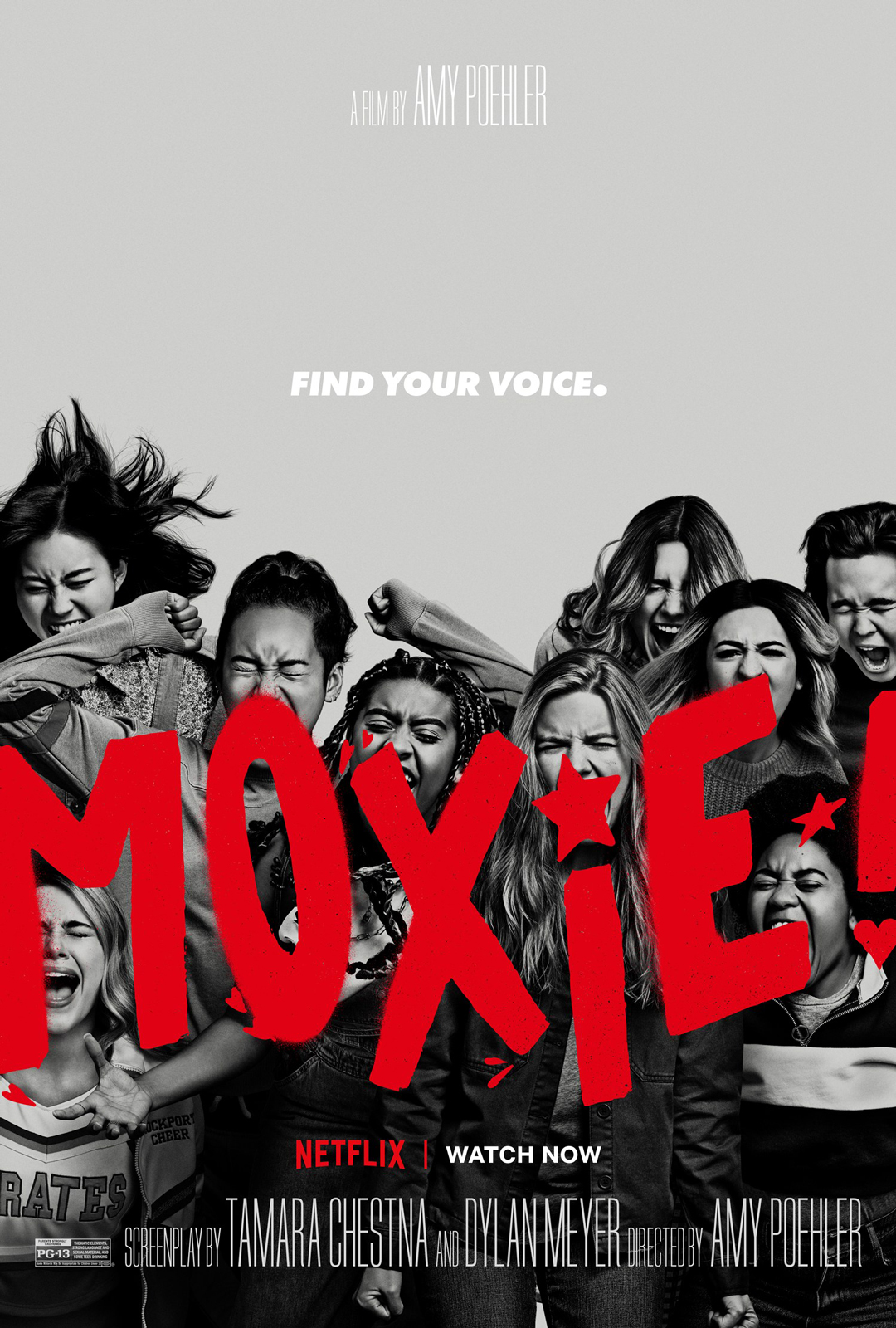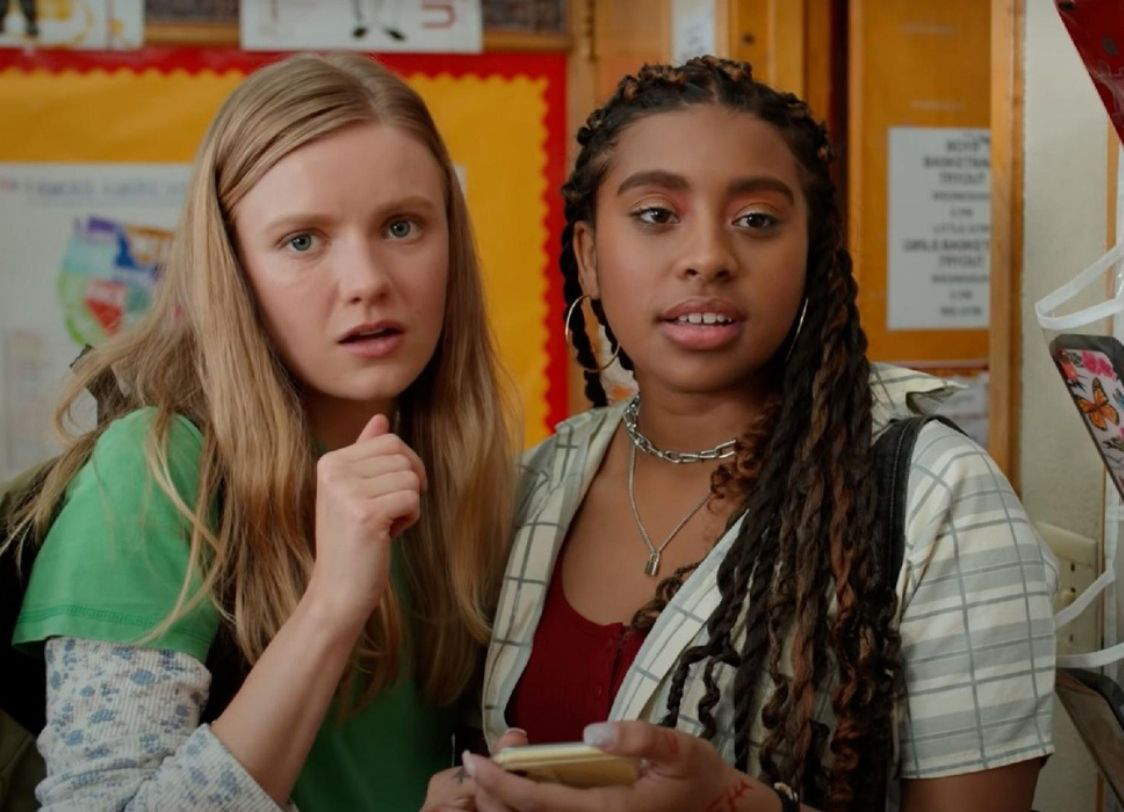
REVIEW: ‘Moxie’ imagines a more inclusive expression of punk feminism

Comedy icon Amy Poehler’s latest film “Moxie” is an adaptation of a 2015 young adult novel of the same name. The film follows Vivian (Hadley Robinson) as she becomes fed up with the sexism at her high school. Vivian takes inspiration from her mom’s (Poehler) rebellious past by anonymously distributing a zine blasting her school’s toxic behavior.
This zine’s impact at first seems to be very limiting but soon inspires other women and some men to act out in solidarity and challenge the status quo. This sexism challenged within the story ranges from double-standards in school dress code and devaluation of “female” sports to harassment and sexual assault.
In typical high school movie form, “Moxie” gives us the basics: a social pyramid with popular jocks on top, a house-party scene, a mysterious “new kid,” a principle we love to hate, a cute love interest and a cast of attractive people who look like they are about to cross the stage of a college graduation rather than a high school one.
Outside of the occasional lines of cringe dialogue from the youths, the acting was pretty solid throughout. The strongest performances were moments of conversation between fewer characters rather than the several group scenes.
One noticeable aspect from the very beginning is that this film is much more representative of Gen Z and Gen Y’s ethnic make-up than most movies that are so-called contemporary. After Viv’s best friend Claudia (Lauren Tsai) and new-girl Lucy (Alycia Pascual-Peña) had both entered the narrative significantly, there were still several characters of color, including the main love interest Seth, played by Nico Hiraga. Instead of “pulling a Netflix” and calling it a day after casting a few light-skinned Black women, the story gives us a more accurate representation of the present. Unlike much of Poehler’s other works like “Parks and Recreation,” these differences aren’t ignored in a colorblind reality. Viewers see how these characters move through the world differently while still dealing with sexism’s bonus.
The film’s identity-conscious casting and writing are so significant that it fell short on how it addressed many of these moments. The writers appeared to understand the nuances in discussing different ways sexism affects one based on race, ethnicity, able-bodiedness, body type, gender expression, etc. Still, the story did not give a moment to unpack anything unless it directly affected Vivian.
The story, laid out over 3-4 episodes as a limited series would have been much more substantial than a standalone film. Also, the argument that the diverse coalition of “Moxies” only served the white lead protagonist’s journey would be weaker with this change because characters like Claudia or Lucy or any of the other girls could have significant scenes apart from Vivian. The struggles of other characters should serve narratives other than Vivian.

Left to right: Robinson and Pascual-Peña. Photo courtesy of Netflix.
There was even a moment when Vivian had to confront the privileges directly she has as a white woman speaking up against sexism, and Vivian does not sit in it for more than a second.
This was an issue throughout “Moxie.” The film would show how sexism and misogyny intersect with transphobia, ableism, classism, racism, and rape culture for a moment and move to the next instance too quickly. There was no room to unpack these harms.
There are moments where viewers have to jump to conclusions because the film was trying to do too much at once. Some moments did not fully resolve, and Vivian did not sit and evaluate her emotions as her “revolution” began to crumble. It felt like there was too much happening in the film to tell a fully realized story and address the shortcomings of white feminism beyond one scene.
The book’s synopsis mentions that Vivian’s mother was in Riot Grrrl, a feminist movement within the punk scene. While not explicitly mentioned in the film, the soundtrack alludes to this during crucial moments in Vivian’s journey, like the night she makes the first zine. The punk music montage helps contextualize the story and show that expression of feminist rebellion via rage. This is an emotion relatively new to the meek Vivian introduced at the start of the story.
The storytellers want to address the not-so-intersectional approach to the feminism of the 90s Riot Grrrl Movement, but they just tripped over a few times. More films need to tell more of these stories of rebellious girls standing up to the patriarchy, and while this had shortcomings, it was a cute film with its heart in the right place.
The film addressed issues such as mainstream white feminism, violence against women, the policing of bodies and double standards in a very approachable way devoid of inaccessible lingo or deifying a historical figure.
Anyone interested in films set during highschool or checking how films use “direct” feminism in the latest movies should give this a watch. Despite its flaws, the PG-13 film is an excellent entry-point to feminism to watch with one’s middle schoolers, even with the mature topics addressed.
Viewers not falling in either of those categories can skip it, but do not lament that there is nothing to watch on Netflix. Audiences should be aware this film discusses rape and uses a reclaimed homophobic slur.

I am an old lady (literally) and loved everything about this film. The soundtrack, the visual montages, the acting were all outstanding to me. It may not be as authentic as real life in portraying people of color or homosexuals, but it’s a start in the right direction.